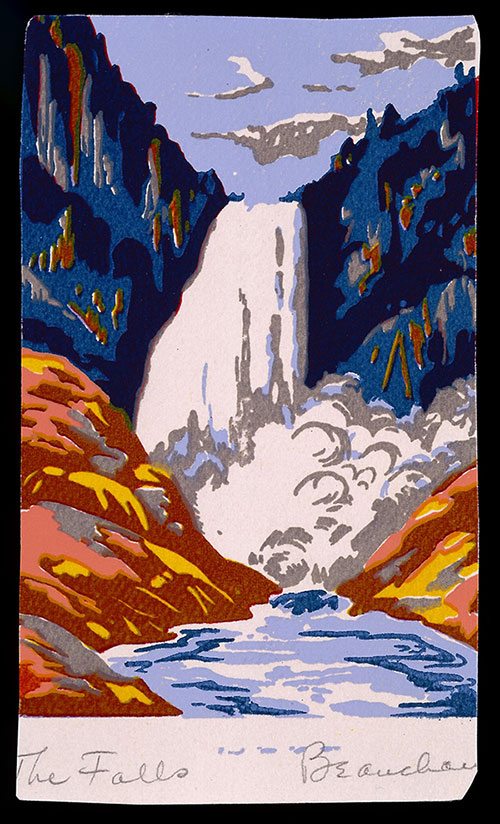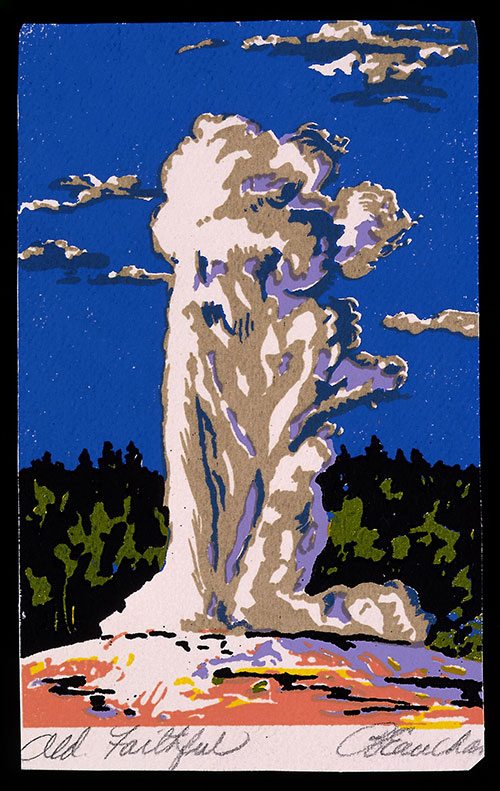Greetings fellow art fans!
I wanted to update you on my time spent so far in the Whitney Western Art Museum’s vault. I have come across some magnificent treasures and would like to introduce you to a few of the Whitney’s works on paper. Most notably for me this week, have been the works by John W. (Jack) Beauchamp, Jr (1906 – 1957). The two small serigraphs on paper, respectively titled The Falls and Old Faithful depict different landmarks of Yellowstone National Park and were produced in the 1930s.
The method of serigraphy, also known as silk-screening or screen-printing, is the process of producing an image, or serigraph, by pressing color pigments though a fabric stencil comprised of porous and non-porous sections. In this way an image can then be reproduced on fabric, or ceramic, wood, or in this case, paper.

This form of printing is said to be based on the Japanese art of katazome, a form of stenciling with waterproof papers used in ancient Japan to copy images. Some say, however, that the art originated in the Fiji Islands where banana leaves were used as stencils. The art as it is known today was patented in England in the early 1900s. The first commercial use of serigraphy in the United States occurred in 1914 when John Pilsworth developed a process to produce multiple multi-color prints from a single fabric screen, which was used to make signs and posters.

Back to our artist John Beauchamp, Jr.: He was born in Indiana in 1906. His family relocated to Fort Benton, Montana, and later moved to Helena where Beauchamp studied art. After spending his early years in Montana, he relocated to New York City and Provincetown to study with Richard Miller, Leon Kroll, John Whorf and others. He received the Carol H. Beck Medal from the Pennsylvania Academy of Fine Arts for best portraiture. During the Great Depression, Beauchamp won several competitions to paint murals for the U.S. postal offices.
The two Beauchamp serigraphs in the Whitney’s collection are reminiscent of posters produced by artists working for the Works Progress Administration between 1938 and 1941. They are vivid depictions of the geological wonders of Yellowstone that I myself have witnessed in the past weeks and speak to the overwhelmingly beautiful landscapes of the West.





